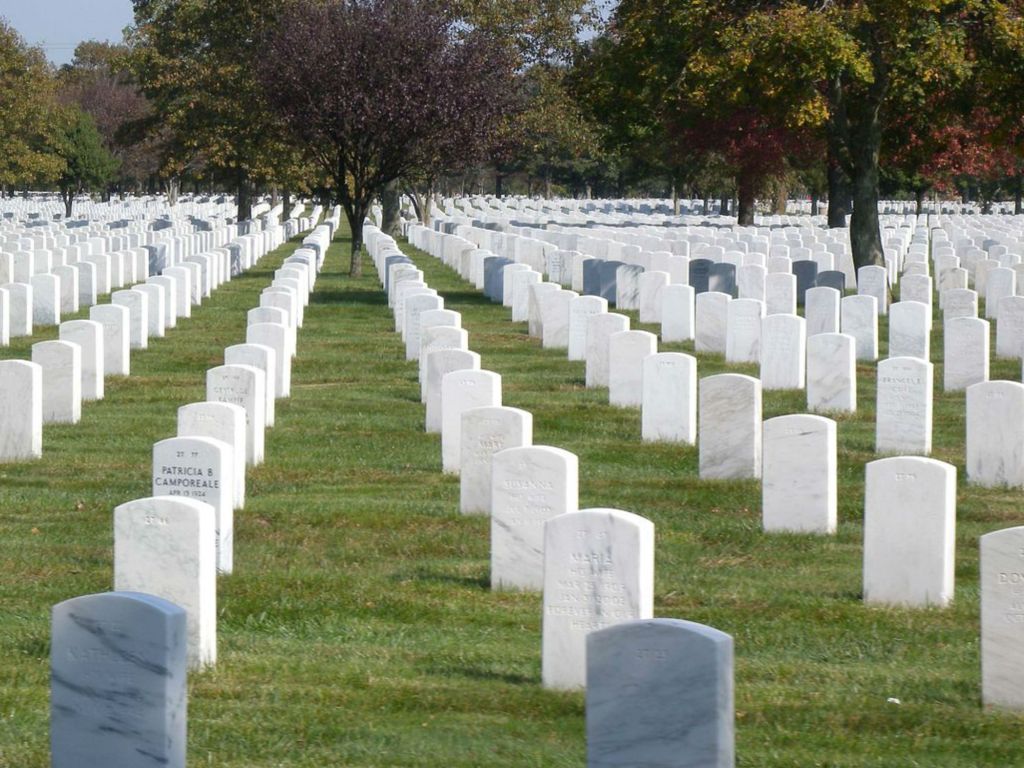
The documents that follow the army’s “disposition of remains” letter confirm or call out a number of pieces of information: Babe was indeed buried in only a cloth shroud in his temporary grave in Mirandola, Italy. When he was disinterred, his remains were, at that point, skeletal. His remains were escorted to their final resting place by Sgt. John D. Tiger, “a service man who is of equal or higher rank, of the same branch of service, of the same race and sex of the deceased.”
In the “Request for Disposition of Remains” form included with the letter, the army itself suggested his remains be returned to the United States and reinterred at Long Island National Cemetery, a suggestion to which my grandfather assented. Though not the closest military cemetery—Cypress Hills National Cemetery may be a smidge closer—it would certainly have been acceptable.
At this point, it’s fairly easy to assemble a timeline of what followed the army’s letter requesting a decision from my grandparents about the disposition of Babe’s remains. That timeline follows a few other brief observations.
In a fairly lengthy telegram dated Jan. 26, 1949, my grandparents learned that Babe’s remains were en route to the United States and that it might yet take another five days to four weeks before a funeral could take place. In fact, it took a little longer.
“Military escort will accompany remains to national cemetery,” read the telegram from G.H. Bare, Colonel, Quartermaster Corps. “Appropriate joint military honors and religious services will be provided at graveside by veterans’ organization or by military or naval personnel.”
I do not know whether my grandparents attended. I have no reason to think they didn’t.
A later document called “Information for Next of Kin of World War II Deceased” refers to the telegram and goes into greater detail about what would happen upon the arrival of Babe’s remains on U.S. soil.
“Remains are escorted home individually by a service man who is of equal or higher rank, of the same branch of service, of the same race and sex of the deceased,” the form explained. “Military honors are always provided by the U.S. Government at the national cemeteries.”

As it turns out, Babe’s remains were buried for the last time on March 8, 1949—nearly four years after he was killed. An article from Archives.com explained the process and, in part, why it took so long.
“This was due in part to a shortage of materials for cases for the coffins and a shortage of metal for the coffins themselves,” author Jennifer Holik wrote in the 2014 article. “The coffins were ‘made of steel with bronze finish’ and ‘were seamless, a cover set on a rubber gasket is sealed with thirty-two lugs.’”
Timeline to Babe’s Burial
- Nov. 20, 1947. This is the date stamped on what I presume is the returned “Request for Disposition of Remains” form the army sent my grandfather a couple of weeks earlier. This is the form assenting to Babe’s relocation to Long Island National Cemetery. It’s a little confusing because I also see several other dates either written or stamped on the form, including Nov. 19, 1948 (which honestly looks like a mistake, to me); and June 3, 1948 (seven months later).
- June 15, 1948. This is the date of the “Disinterment Directive” form, which must be the order to dig up Babe’s remains.
- July 28, 1948. The date Babe’s remains were actually disinterred, according to the “Disinterment Operations Record.”
- Aug. 4, 1948. The date Babe’s remains were placed in his final casket (from the same form).
- Jan. 26, 1949. Date of the telegram from the Quartermaster’s Corps I mentioned earlier.
- March 8, 1949. The date of the “Receipt of Remains” at Long Island National Cemetery. The form indicates Babe’s remains were escorted by Sgt. John D. Tiger. Another form indicates this was the date Babe was buried.
Note: The photo above is of Long Island National Cemetery, taken by Wikipedia user Jim Henderson and given to the public domain.